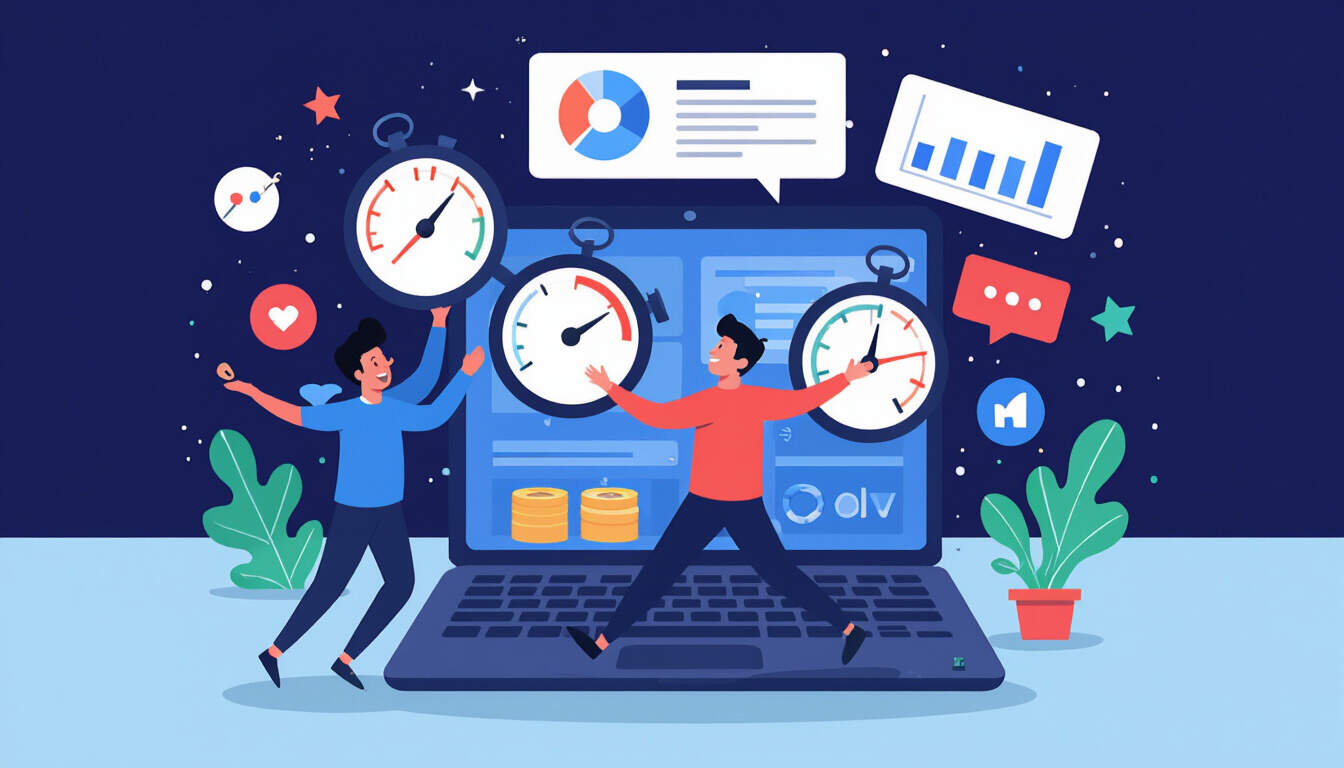Optimizing Frontend Performance Metrics in Solo SaaS Development
 by Shanie Goodwin
by Shanie Goodwin
Frontend performance metrics are essential for solo SaaS developers aiming to deliver fast, responsive applications. By focusing on key indicators like load times and interactivity, developers can improve user satisfaction and efficiency. This article provides practical steps and examples to enhance these metrics effectively.

Frontend performance metrics play a crucial role in building effective SaaS applications, particularly for solo developers working alone. These metrics help ensure that applications run smoothly and keep users engaged.
Why Focus on Frontend Performance Metrics?
In software development, especially for SaaS, performance directly impacts user retention. For instance, slow load times can frustrate users and lead to higher abandonment rates. frontend performance metrics provide clear data on how well an application performs from the user's perspective.
One key aspect is how these metrics influence overall application success. By monitoring them, solo developers can identify issues early and make targeted improvements. Consider a simple SaaS tool for project management; if it takes too long to load, users might switch to competitors.
Essential Frontend Performance Metrics to Track
There are several core metrics that every solo developer should know. First, load time measures how quickly a page becomes visible. This is vital because users expect instant access to features.
Another important metric is Time to Interactive (TTI), which indicates when a page is fully interactive. For SaaS apps, TTI ensures that users can start working without delays. In a real-world scenario, a solo developer building a dashboard might use TTI to test new features.
First Input Delay (FID) is also critical, as it tracks the time between a user's first interaction and the browser's response. This metric helps in creating responsive interfaces that feel seamless.
Practical Steps to Measure and Improve Metrics
To get started, developers can use built-in tools for measurement. Begin by integrating browser dev tools or third-party services to collect data on these metrics.
Here is a step-by-step guide:
- Set up monitoring: Use tools like Lighthouse to audit your application. This involves running tests on your SaaS site to gather baseline data.
- Analyze results: Look at reports to pinpoint bottlenecks. For example, if load time is high, check for large images or inefficient scripts.
- Optimize images: Compress files to reduce size, which directly improves performance.
- Minimize JavaScript: Remove unnecessary code to speed up TTI. A solo developer might refactor a feature to make it lighter.
- Test interactions: Simulate user actions to measure FID and refine event handlers.
By following these steps, developers can see measurable improvements. For instance, one solo entrepreneur reduced their app's load time from 5 seconds to under 2 seconds, leading to better user feedback.
Real-World Examples in Solo SaaS
Let's explore examples from actual projects. A developer creating a solo SaaS for email marketing found that improving TTI increased user engagement by 20%. They achieved this by lazy-loading components, which deferred loading until needed.
In another case, a productivity app developer focused on FID. By optimizing click events, they made the interface more responsive, resulting in fewer complaints about delays.
These examples show how targeted efforts on metrics can lead to tangible benefits. Solo developers often work with limited resources, so prioritizing these areas maximizes impact.
Tools and Techniques for Ongoing Monitoring
Beyond initial measurements, ongoing monitoring is key. Developers can set up automated tests to track metrics over time. For example, using performance budgets to set limits on file sizes ensures consistency.
Techniques like code splitting can break down JavaScript files, improving load times without compromising functionality. In practice, a solo SaaS builder might implement this during updates to maintain performance.
Challenges and Solutions for Solo Developers
While working alone, developers might face resource constraints. One common challenge is balancing feature development with performance tweaks. A solution is to allocate specific time slots for optimizations, such as weekly reviews of metrics.
Another approach is leveraging community resources, like open-source libraries that aid in performance without reinventing the wheel. This way, solo entrepreneurs can stay efficient and focused.
Conclusion
By prioritizing frontend performance metrics, solo SaaS developers can create applications that stand out. These metrics not only enhance user experience but also support long-term growth. Implementing the steps outlined here will help in building reliable, efficient software. Remember to regularly assess and refine your approach for the best results.
